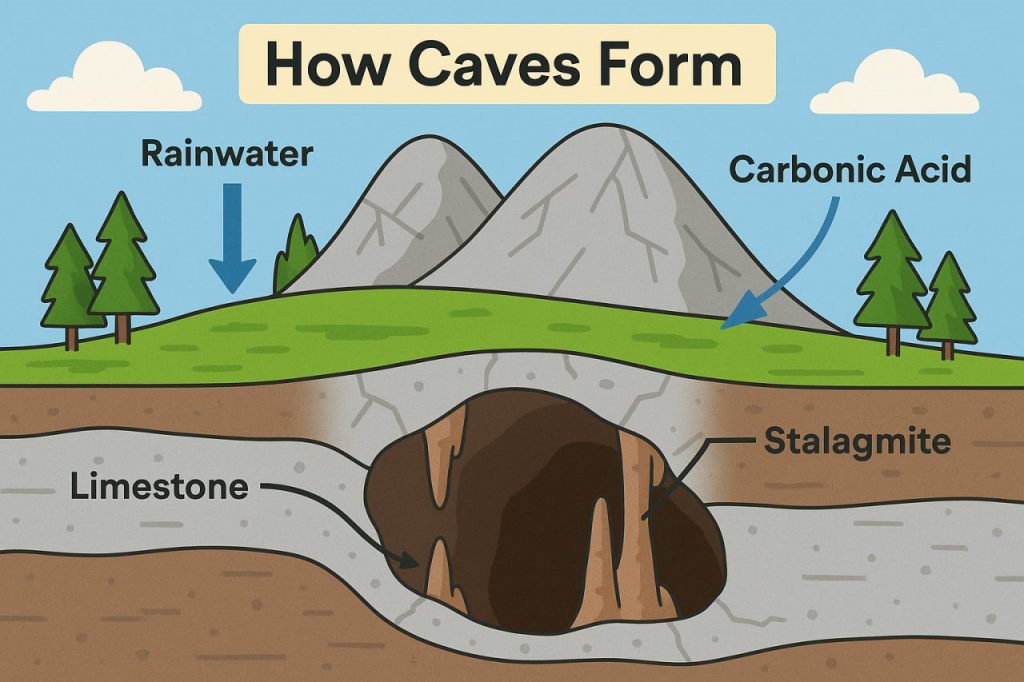Caves are mysterious underground spaces that form over thousands or even millions of years. These natural formations can be small cracks in rocks or vast chambers stretching for miles beneath the Earth’s surface. The formation of caves is a fascinating process involving geology, water, time, and sometimes even living organisms.
What Are Caves?
A cave is a naturally occurring hollow space in the ground, large enough for a person to enter. Most caves form in areas where limestone or other soluble rocks are present, though caves can also develop in lava flows, ice, or even under the sea.
The most common type of cave is a solution cave, created through the chemical action of water.
The Role of Water in Cave Formation
Water is the main sculptor of caves. Here’s how the process works:
- Rainwater absorbs carbon dioxide from the air and soil, forming a weak acid called carbonic acid.
- This acidic water seeps into cracks in limestone or other soluble rocks.
- Over time, the acid dissolves the rock, widening cracks into tunnels.
- As water continues to flow, it enlarges the passages, eventually creating cave systems.
This process is called chemical weathering, and it can take tens of thousands of years to form large caves.
Other Types of Caves
While most caves form in limestone, there are other types:
- Lava tubes: Formed when flowing lava hardens on the outside while the inside continues to flow, leaving a hollow tube.
- Sea caves: Created by the pounding of ocean waves against cliffs, eroding the rock.
- Glacier caves: Formed inside glaciers as meltwater carves tunnels through the ice.
- Tectonic caves: Created by the movement and cracking of Earth’s crust.
Each type of cave forms under unique conditions but shares the mystery and beauty of nature’s underground world.
Cave Features: Stalactites and Stalagmites
Inside caves, you’ll often find incredible rock formations like stalactites (hanging from the ceiling) and stalagmites (rising from the floor). These form when mineral-rich water drips slowly through the cave, leaving behind deposits of calcium carbonate. Over thousands of years, these deposits grow into dramatic shapes.
Sometimes, they even meet in the middle to form a column.
Why Caves Are Important
Caves are not only beautiful but also scientifically and ecologically important. They preserve ancient fossils and rock layers, offer clues to past climates, and support rare or unique ecosystems, including bats, insects, and microbes found nowhere else.
Many cultures have also used caves for shelter, rituals, and art throughout history.
Glossary
- Limestone – A type of rock that easily dissolves in acidic water.
- Carbonic acid – A weak acid formed when carbon dioxide dissolves in water.
- Chemical weathering – The process of breaking down rocks through chemical reactions.
- Stalactite – A mineral formation hanging from a cave ceiling.
- Stalagmite – A mineral formation growing upward from a cave floor.


